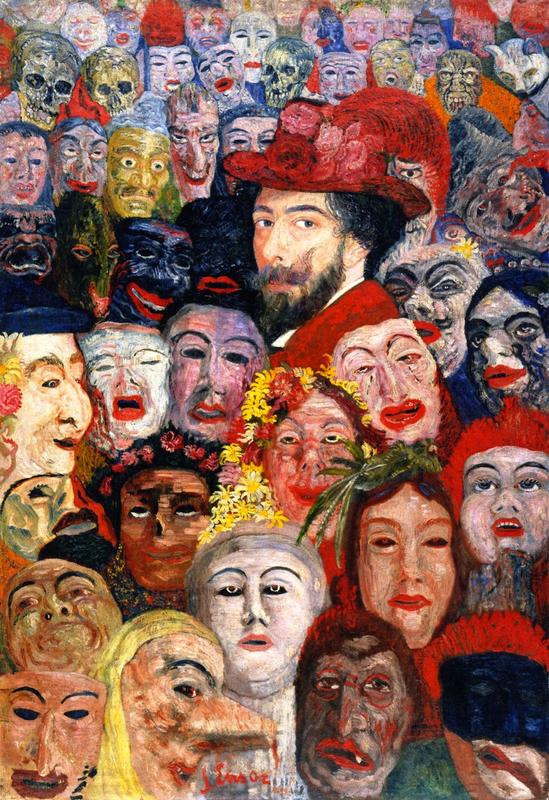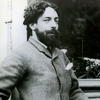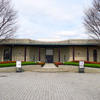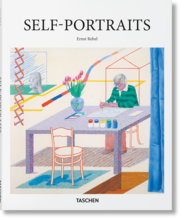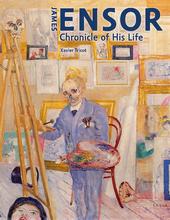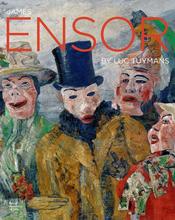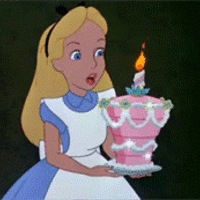More about Self-Portrait with Masks
- All
- Info
- Shop
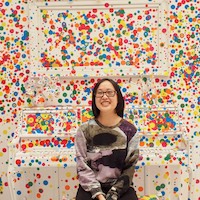
Contributor
In Self-Portrait with Masks, James Ensor idolizes madness (and himself, of course) in a sea of borrowed identities and unintentional cameos.
James Ensor embodied an art movement all on his own. Nobody then or now could quite place him in a specific group, since his taste for the macabre set him apart from Impressionists like Georges Seurat and his approach towards light veered towards madness, not appreciation.
In the late 1800s, doctors and social scientists diagnosed madness as a disease that afflicts the masses. Out of reason and control, the lower classes then require tender love and care to return back to their normal, disgruntled, penniless selves. Otherwise, the madness will spread to literally everyone and the wealthy will fall and chaos will ensue and the world will burst into flames. The end.
Wear a mask, kids, insanity is contagious.
Ensor took “masks” very literally; he grew up around them, and his family’s shop stocked with carnival masks occupied the floor right below his room. He started including more of them into his artwork after his father and dear maternal grandmother passed away within a short span of each other. They served as coping mechanisms in dealing with a reality too cruel and irrational to understand.
Political upheaval in Belgium also led Ensor to become an anarchist, or someone who rejects anything that has to do with the state. Like the side character in a rom-com, the anarchist yearns for something he knows he will never obtain. Yet he cannot resist imagining a future without order or class. Your average anarchist enjoys drinking coffee, spreading gossip, and watching people destroy themselves—from a distance. We swoon.
For Ensor’s self-portrait, masks serve two purposes: concealing people’s true selves and revealing the truth about people in general. According to a philosopher that Ensor was quite fond of, politicians wear masks so consistently that they eventually merge with their masks and lose their identities to irreparable corruption. Politicians, then, become inhuman.
A big statement indeed, but, then again, anarchists don’t really sweat the small stuff.
And so Ensor presents us with a riotous self-portrait full of human-like masks, mask-like humans, and a few creatures that resemble neither masks nor humans. Notable cameos include:
-
Ronald McDonald after a five-year stint in jail for petty theft, haunting Ensor’s right shoulder
-
Frida Kahlo high off eyebrow glue in the mid-bottom row
-
Wendy’s, finally seeing the light after 40+ years of advocating plaque-inducing fast food, to Frida’s right
-
And, finally, Inverted Pinocchio, whose nose grows vertically rather than horizontally and whose dripping snot serendipitously forms Ensor’s signature
Whether these masks belong to anyone human is debatable. Just as anarchy has no firm historical basis on which to stand, Ensor’s utopian universes come freshly baked from the imagination of his brain.
If the lower classes suffer from madness, and politicians from calculated insanity, is there anyone left to trust? In self-portrait with Masks, Ensor presents himself as the sole beacon of sanity in a sea of insanity. His outfit of red, the same scandalous scarlet painted on the masks’ lips, may suggest that he represents the truth that the masks claim to speak but in reality do not.
Or, judging from his history of painting absurd visions with often unintelligible implications, Ensor could be the finest mask of all.
Sources
- Campbell-Johnston, Rachel. "The man behind the masks; James Ensor's art was influential in Europe - and it's absolutely bizarre, finds Rachel Campbell-Johnston." The Times(London), December 16, 2016, 1st ed., T2 sec.
- Eisenman, Stephen F. "Allegory and Anarchism in James Ensors "Apparition: Vision Preceding Futurism"." Record of the Art Museum, Princeton University 46, no. 1 (1987): 2-17.
- "James Ensor." Musée d'Orsay: James Ensor. February 07, 2008. http://www.musee-orsay.fr/en/events/exhibitions/in-the-musee-dorsay/exh….
- Jonsson, Stefan. "Society Degree Zero: Christ, Communism, and the Madness of Crowds in the Art of James Ensor." Representations 75, no. 1 (Summer 2001): 1-32.

